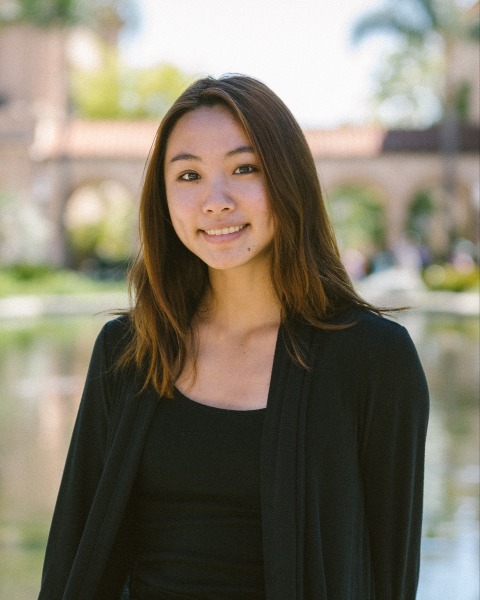Neural Engineering
Secreted factors from human neural stem and progenitor cells do not stimulate human vessel angiogenesis
(K-412) Secreted factors from human neural stem and progenitor cells do not stimulate human vessel angiogenesis

Tzu Chia Liu (she/her/hers)
Graduate Student Researcher
University of California, Irvine
La Jolla, California, United States- BG
Brenda Gutierrez, PhD
MD/PhD Student
University of California, Irvine, United States - JF
Jennifer Fang, PhD
Assistant Professor
Tulane University, United States - CH
Christopher Hughes, PhD
Principle Investigator
University of California, Irvine, United States - LF
Lisa Flanagan, PhD
Principle Investigator
University of California, Irvine, United States
Presenting Author(s)
Co-Author(s)
Primary Investigator(s)
Human neural stem and progenitor cells (hNSPCs) and human endothelial cells (hECs) are tightly coupled in early development, where the central nervous system is vascularized through vasculogenesis (de novo vessels formed from ECs) and angiogenesis (growth of new blood vessels from pre-existing vasculature). In adults, hNSPCs may encourage vessel repair after neural insults such as stroke or traumatic brain injury (TBI). Our lab previously demonstrated hNSPCs stimulate hEC vasculogenesis in 3D scaffolds mimicking the biomechanical properties of the brain (Arumoli et al. Acta Biomaterialia, 2016). However, whether hNSPCs also induce hEC angiogenesis is unknown. Our lab used bulk RNASeq and single cell RNASeq to find that hNSPCs make a subset of crucial factors known to induce angiogenesis – Fibronectin-1, TGF- α, and HGF – which were identified from fibroblasts that stimulate angiogenesis (Arumoli et al., Acta Biomaterialia, 2016; Newman et al., Mol Biol Cell, 2011). Here, we used a 3D angiogenesis bead assay to test the effects of hNSPCs on hEC angiogenesis.
Materials and Methods: We adhered human umbilical vein-derived endothelial cells (HUVECs) onto collagen coated SphereCol Beads (Sigma-Aldrich) at a concentration of 400 HUVECs per bead by mixing the beads with cells and shaking gently every 20 minutes for 4 hours at 37°C and 5% CO2 in a T25 tissue culture flask. The next day, HUVEC coated beads were resuspended in 2 mg/mL bovine fibrinogen with 0.15 units/mL aprotinin (to reduce gel degradation). The fibrinogen was polymerized with 2.5 units/mL thrombin in a 24-well plate. EGM-2 media (Lonza) was added and either no cells (negative control), 20,000 hNSPCs (test; fetal-derived from the human cerebral cortex), or 20,000 normal human lung fibroblasts (NHLF, positive control) were plated on top of the gel. EGM-2 media was changed every other day for 8 days. Beads (30 beads per condition) were randomly selected and imaged on the BioTek Cytation 5 with BioSpa 8 microscope (Agilent) on Day 4 and Day 8. Z-stack images were analyzed in ImageJ (NIH) to assess hEC sprouts. Ten beads per condition were randomly sampled for analysis and compared using one-way ANOVA with Šidák post-hoc for multiple comparisons, n = 3 biological replicates.
Results, Conclusions, and Discussions:
We compared vessel sprouting across 3 conditions: hEC-coated beads alone or with either NHLFs (positive control) or hNSPCs. In the presence of NHLFs, vessels sprouted by day 4 and by day 8 sprouts extended, branched, anastomosed with nearby vessels, and formed lumens (Fig. 1). For both hECs alone or with hNSPCs, disorganized sprouts formed at day 4 and by day 8 sprouts regressed and segregated into unattached HUVECs that migrated away from the bead (Fig. 1A). There was no significant difference between the negative control and hNSPC conditions for any angiogenesis measure, whereas NHLFs stimulated significantly more sprouting than HUVECs alone or with hNSPCs (Fig. 1B). These results indicate that secreted angiogenic factors produced by hNSPCs were not sufficient to induce angiogenesis in this assay.
Human neural stem cell transplantation in animal stroke models increased angiogenesis compared to buffer-treated controls (Horie et al., Stem Cells, 2011). However, determining whether hNSPCs affect human angiogenesis is important for fully assessing the therapeutic capacity of hNSPCs and their secreted factors, which can be delivered non-invasively and intravenously, for neurovascular injuries. While our RNAseq data showed hNSPCs highly express a subset of angiogenic factors, we found hNSPCs plated on top of a 3D scaffold containing hEC-coated beads do not stimulate sprouting angiogenesis. This may be because hNSPCs do not make all identified angiogenic factors or secrete comparable quantities of factors compared to NHLFs. NHLFs have a higher population doubling time than hNSPCs, so there may be cell density differences affecting secreted factor concentrations. Lastly, hNSPCs may affect angiogenesis via a direct cell contact-mediated mechanism not recapitulated in the current assay. In addition to the crosstalk between hNSPCs and hECs, other perivascular cells such as pericytes and smooth muscle cells affect vessel maturation and stabilization (Ucuzian AA, J Burn Care Res, 2011). Future studies will determine whether increased numbers of hNSPCs, hNSPC cell contact, or co-culture of hNSPCs with additional support cells can stimulate angiogenesis to fully assess the potential and limitations of hNSPCs as therapy for neurovascular injuries.
Acknowledgements (Optional) :
References (Optional) :
Arulmoli, J., Wright, H. J., Phan, D. T. T., Sheth, U., Que, R. A., Botten, G. A., Keating, M., Botvinick, E. L., Pathak, M. M., Zarembinski, T. I., Yanni, D. S., Razorenova, O. V., Hughes, C. C. W., & Flanagan, L. A. (2016). Combination scaffolds of salmon fibrin, hyaluronic acid, and laminin for human neural stem cell and vascular tissue engineering. Acta biomaterialia, 43, 122–138.
Horie, N., Pereira, M. P., Niizuma, K., Sun, G., Keren-Gill, H., Encarnacion, A., Shamloo, M., Hamilton, S. A., Jiang, K., Huhn, S., Palmer, T. D., Bliss, T. M., & Steinberg, G. K. (2011). Transplanted stem cell-secreted vascular endothelial growth factor effects poststroke recovery, inflammation, and vascular repair. Stem cells (Dayton, Ohio), 29(2), 274–285.
Newman, A. C., Nakatsu, M. N., Chou, W., Gershon, P. D., & Hughes, C. C. (2011). The requirement for fibroblasts in angiogenesis: fibroblast-derived matrix proteins are essential for endothelial cell lumen formation. Molecular biology of the cell, 22(20), 3791–3800.
Ucuzian, A. A., Gassman, A. A., East, A. T., & Greisler, H. P. (2010). Molecular mediators of angiogenesis. Journal of burn care & research : official publication of the American Burn Association, 31(1), 158–175.
